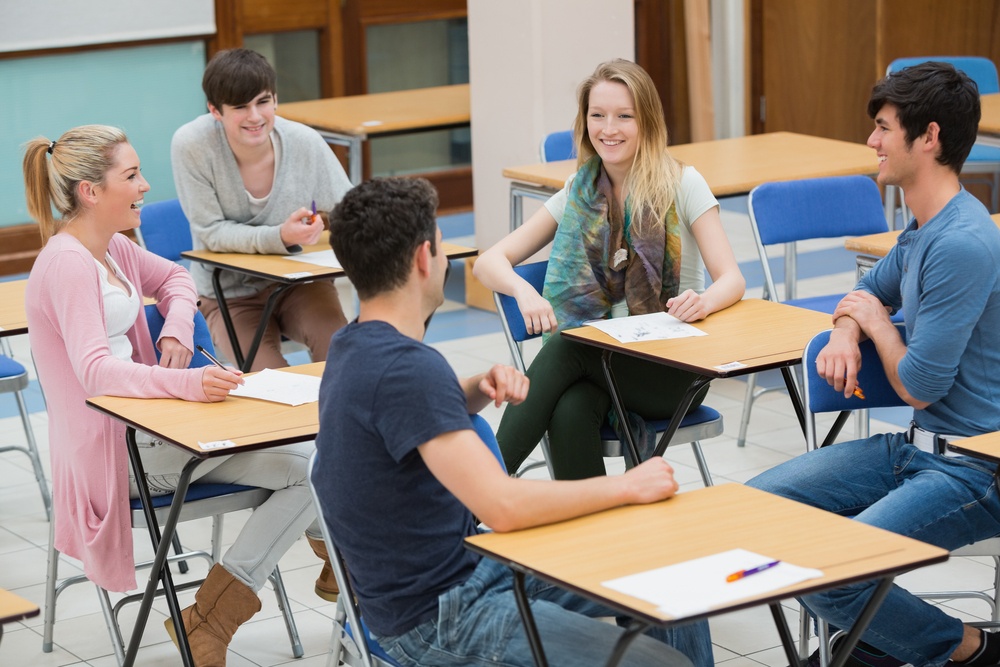What’s the condition of conversation in your classroom today? Are students engaging with each other – exchanging ideas, building relationships, and learning together? Are you connecting in face-to-face dialogue with your students throughout the school day? Is there a buzz of talk underlying daily learning outcomes? Are students looking up from digital devices routinely and strategically to discuss new learning? If so – congrats, keep going! If no – keep reading for some conversation inspiration!
As a Curriculum & Instruction Specialist, I do inquiries on key topics and trends in education. Outside work, I read current nonfiction and am always on the lookout for a new idea that will give me a leading edge or simply, make life easier. It was during one of my recent dives into life-skills learning, where I discovered the bookReclaiming Conversation: The Power of Talk in a Digital Ageby Sherry Turkle.
“READ – ME – NOW” blinked my brain in that minute I scanned the title and description. Author Sherry Turkle calls herself a “student” of conversation – she’s a sociologist, a teacher, and a clinical psychologist. She says these fields all rely on conversation and approach it with high expectations. It’s relevant for us all! Digital technology is expanding daily, replacing in-person, face-to-face communication. The premise of the book relates to both our work life in education and our home life with friends and family: conversation is a life-skill that now, more than ever, we must teach in schools today.
There’s ongoing research on the power of conversation as a 21st Century skill, but it’s also common sense – don’t ya think? For today, let’s focus on the simple side with a few guiding quotes to inspire and some teaching tips you could try tomorrow!
Inspiration fromReclaiming Conversation: The Power of Talk in a Digital Ageby Sherry Turkle:
- “Face-to-face conversation is the most human – and humanizing – thing we do. Fully present to one another, we learn to listen. It’s where we develop the capacity for empathy. It’s where we experience the joy of being heard, of being understood. And conversation advances self-reflection, the conversations with ourselves that are the cornerstone of early development and continue throughout life.” (pg. 3)
- “In the classroom, conversations carry more than the details of a subject; teachers are there to help students learn how to ask questions and be dissatisfied with easy answers. More than this, conversations with a good teacher communicate that learning isn’t all about the answers. It’s about what the answers mean. Conversations help students build narratives that will allow them to learn and remember in a way that has meaning for them. Without these narratives, you can learn a new fact, but not know what to do with it, how to make sense of it.” (pg. 8)
- “The classroom is a social space where students can see how thinking happens.’ (pg. 14)
- “Reclaiming conversation begins with the acknowledgment that speaking and listening with attention are skills. They can be taught. They take practice and that practice can start now. In your home, in a classroom, at your job.” (pg. 14)
Teaching Tips to Increase Classroom Conversation – Try One Tomorrow!
- Create or designate a device-free classroom plan or specifically set aside class time for “tools down” conversation. This works for learning at every level – devices are everywhere!
- Lesson planning for conversations. All humans – students and teachers – need to interact with content and new ideastointernalize and apply learning. Building connections requires communication and revealing our thoughts and experiences – this means we need time to share, to give-and-take ideas.
- Beginning lessons – kick-off with a question that provokes discussion – then turn & talk.
- Lesson closure – before any formative assessment or finishing step, end with an open-ended question – then turn & talk.
- Book discussions and conversations around shared text. Read shared text, then discuss using a framework – model, teach, practice, and repeat. Student-led is best.
- Model good conversations one-on-one with students who struggle to engage with others. Include responses/prompts such as: Really? Wow! That’s interesting. No kidding!
- Encourage turn-taking using an object, such as a “talking stick.”
- Think-Pair-Share is still an effective instructional strategy. Check out this resource for other variations to enhance student conversations on content.
Wouldn’t it be wonderful if we could incorporate more conversation into our daily lives? Why not try one new trick to get your students talking? Here’s to better learning and life connections for all teachers and students!
Resources:
- http://www.cal.org/siop/pdfs/lesson-plans/using-the-siop-model-to-address-the-language-demands-of-the-ccss.pdf
- Turkle, S. (2015)Reclaiming Conversation: The Power of Talk in a Digital Age. New York, NY. Penguin.






